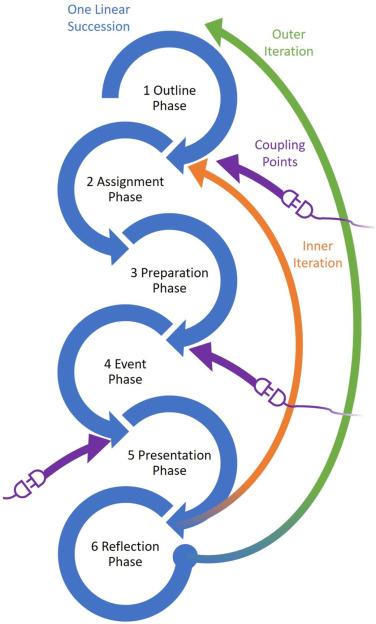Overcoming Challenges in Integrating VR/AR into Curricula: Practical Strategies for Educators
virtual Reality (VR) and Augmented Reality (AR) are revolutionizing the world of education. From creating immersive learning environments to enabling interactive simulations, the integration of VR and AR in curricula is transforming how students learn and teachers instruct. Though, embracing these technologies comes with its own set of challenges.This comprehensive guide delves into the hurdles educators face and presents practical strategies for overcoming them, ensuring a smooth and impactful transition to next-generation learning.
- Why Integrate VR/AR into Curricula?
- Common Challenges in VR/AR Implementation
- Practical Strategies for Overcoming Challenges
- Real-World Case Studies
- First-Hand Experiences from Educators
- Conclusion
Why Integrate VR/AR into Curricula?
Integrating VR/AR in education offers a wide spectrum of benefits:
- Engagement: Immersive environments boost student motivation and attentiveness.
- Deeper Understanding: Abstract concepts become tangible thru visualization and interaction.
- Personalized Learning: VR/AR enables self-paced exploration, catering to diverse learning styles.
- Access to Unique Experiences: Students can “travel” to ancient sites, dissect virtual organisms, or conduct dangerous experiments safely.
- 21st Century Skills: Exposure to cutting-edge technologies prepares students for tech-driven careers.
Despite such benefits, integrating AR/VR into curricula is a journey filled with obstacles. Understanding these is crucial for successful adoption.
Common Challenges in VR/AR Implementation
Many educators encounter the following challenges when introducing VR/AR technology in classrooms:
1. Limited Budget and Resources
VR/AR devices, apps, and software can be expensive. Budget constraints often hinder schools from investing in robust setups, limiting widespread adoption.
2. Lack of Technical Expertise
Educators may not have prior experience with immersive technologies. Insufficient training or technical support can make integration intimidating and inefficient.
3. Curriculum Alignment
Ensuring that VR/AR experiences align with learning objectives and educational standards is essential. Generic or poorly designed content can detract from meaningful learning.
4. infrastructure Limitations
Poor Wi-fi,outdated hardware,and limited classroom space can considerably impact the usability of VR/AR tools.
5. Student Accessibility and Safety
Not all students have equal access to VR/AR technologies. Additionally, there are considerations regarding dizziness, motion sickness, and screen time related to immersive experiences.
6. Content Availability and Quality
High-quality and curriculum-appropriate VR/AR content is still emerging. Finding or creating tailored experiences can be challenging and time-intensive.
Practical strategies for Overcoming Challenges
Despite these barriers, educators can implement actionable strategies to streamline VR/AR integration in schools and universities. Here’s how:
1. Start Small and Scale Gradually
- Begin with pilot programs in a single classroom or subject.
- Utilize cost-effective tools such as Google Cardboard, smartphone-based AR apps, or web-based platforms before investing in high-end devices.
- Gather feedback and use insights to inform broader adoption.
2. Prioritize Professional Development
- Invest in VR/AR training workshops for teachers.
- Establish mentorship programs that connect tech-savvy educators with peers new to the technology.
- Leverage online resources,webinars,and communities (e.g., EdTech forums, Facebook groups).
3. Emphasize Curriculum Integration
- Collaborate with curriculum developers to map VR/AR experiences to educational objectives.
- Co-design lesson plans that leverage immersive technology for deeper engagement and comprehension.
- Assess learning outcomes regularly to ensure effectiveness.
4. Address Accessibility and Inclusivity
- Provide choice learning options for students unable to use VR/AR (e.g., 2D simulations, printed materials).
- Set clear usage guidelines to protect students’ physical comfort and reduce screen-related fatigue.
- Leverage grant opportunities or community partnerships to expand device access.
5. Upgrade Infrastructure Thoughtfully
- Prioritize upgrades in Wi-Fi networks and classroom devices where most needed.
- Consider mobile VR/AR solutions that require minimal infrastructure upgrades.
6. Curate and Create High-Quality Content
- Explore free or low-cost VR/AR content libraries tailored for educators, such as Google Expeditions and ClassVR.
- Partner with local universities, museums, or tech startups to co-create relevant educational content.
- Encourage students to become creators by developing their own AR/VR projects with platforms like Unity or cospaces edu.
Real-world case Studies
Case Study 1: Boosting Engagement in Science Classes
At a middle school in California, science teachers introduced AR simulations for exploring the solar system. Students used their tablets to visualize 3D planets in the classroom, enhancing their grasp of planetary motion and scale.
- Challenge: Budget constraints and limited tablets.
- Solution: Rotational device sharing and grants from local tech companies.
- Result: Improved test scores and heightened student interest in astronomy.
Case Study 2: Immersive History Lessons in Secondary Education
A high school in the UK adopted VR headsets to transport students to ancient Rome. Through virtual tours,students explored ruins and participated in historical role-playing,making lessons more memorable.
- Challenge: Concerns about motion sickness.
- Solution: Gradual exposure and regular breaks.
- Result: Increased student recall and enthusiasm for history topics.
First-Hand Experiences from Educators
“Introducing VR in my classroom was daunting at first, but starting with a simple 360° video tour of the Egyptian pyramids broke the ice—not just for students but for me as well. Soon, their curiosity fueled my own learning journey with the technology.”
— Ms. Nguyen, Social Studies Teacher
“Our district partnered with a local university’s computer science department to create custom AR content for our biology curriculum. The collaboration not only provided tailored resources but also inspired some students to pursue careers in STEM.”
— Mr. Patel, Biology Educator
Conclusion
Despite the challenges of integrating VR/AR into curricula, the transformative potential of immersive learning cannot be overstated. With strategic planning, phased implementation, and sustained professional support, educators can overcome obstacles and unlock a new world of educational possibilities. Whether you’re taking your first steps or refining your approach, embracing VR/AR will prepare students for a dynamic, tech-driven future—one interactive experience at a time.
Ready to start? Begin small, stay curious, and join a community of educators shaping the future of learning through the power of VR and AR.

